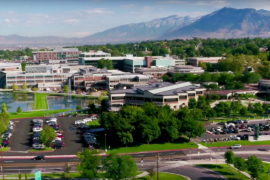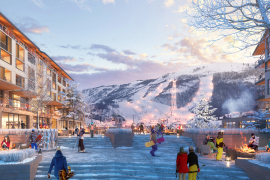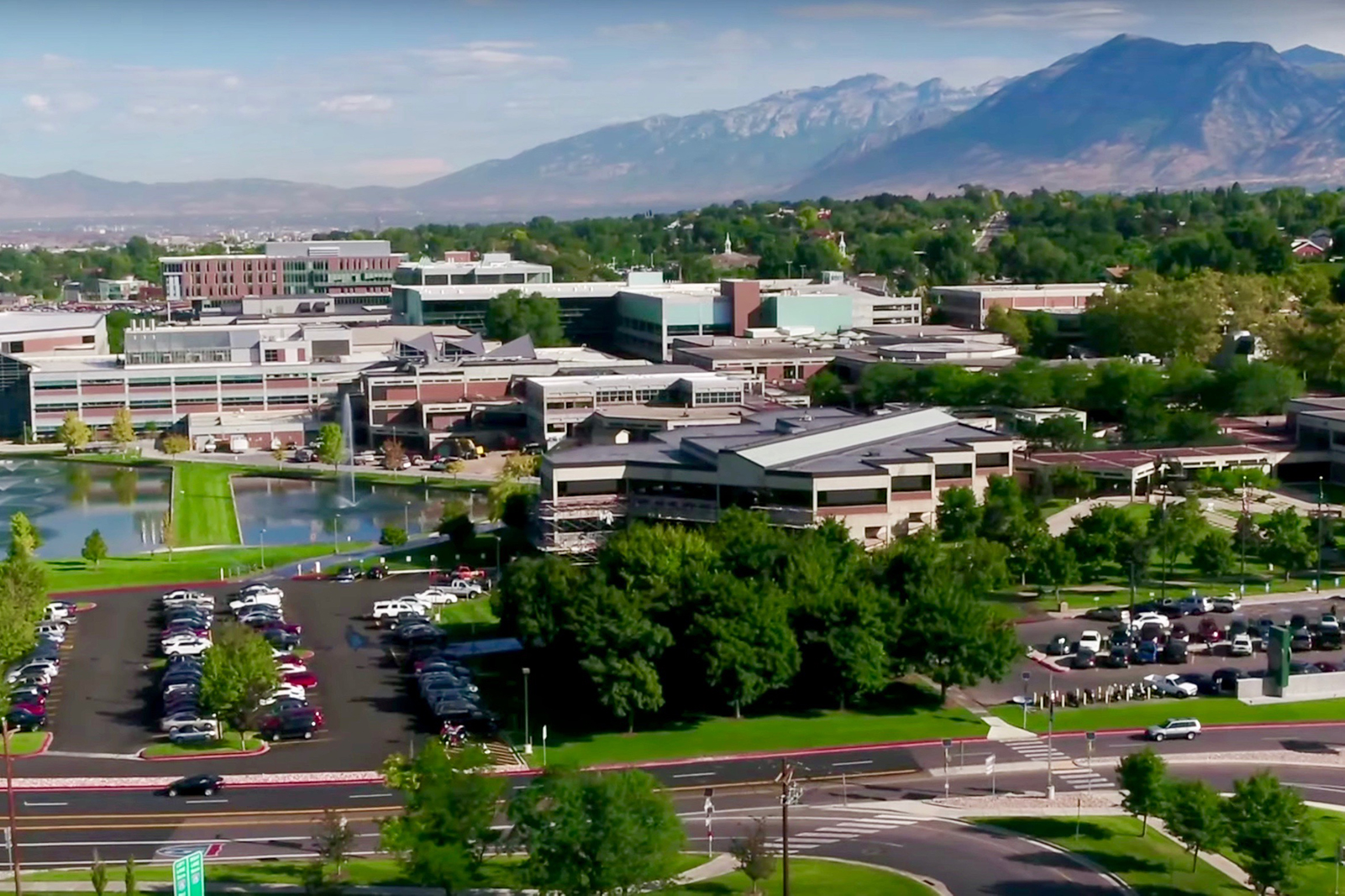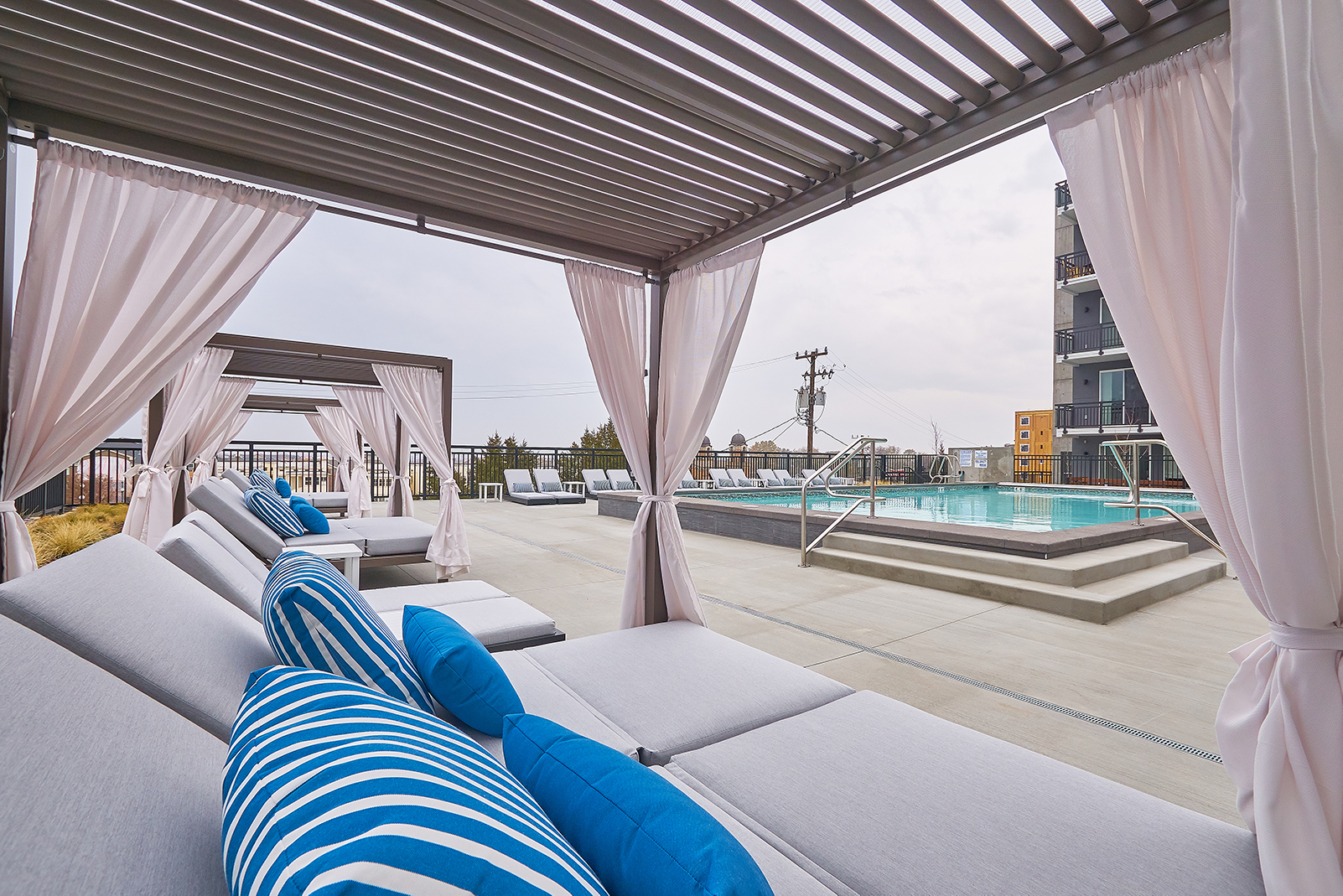The Happy Sumo, a suit tailor, and a rare bookstore – yes, these could all be elements in a hilarious joke, but they are also tenants in a local retail project in Provo, Utah, known as The Shops at Riverwoods. In 1998, The Shops at Riverwoods opened with national retail shops and restaurants but have since gone through the rollercoaster of retail with a hefty turnover in tenants. The large national brands have come and gone, despite recent improvements to the shopping center, itself.
The Shops at Riverwoods is located by the breathtaking Provo River and is full of surrounding amenities. Trails along the river that head up the canyon or down to Brigham Young University are right outside the door. Provo Canyon, offering fishing, skiing, hiking and other activities, is just minutes away. High-end homes with large single family lots surround the shopping mall. So, why would this amazing location not be able to support an amazing retail center so that it could thrive and retain national and high-quality tenants?
The Shops at Riverwoods is just one example of what developers call ‘the decline phenomenon’ which has been happening across the country for the last five decades. According to a paper published by the Urban Land Institute entitled, Ten Principles for Rebuilding Neighborhood Retail, experts have observed that most cities and inner-ring suburbs are showing “commercial streets with deteriorating buildings, empty storefronts or marginal month-to-month tenants, an undersupply of essential goods and services, social problems, poor pedestrian environments and amenities, and untended streets and sidewalks.”
The Urban Land Institute suggests that developers implement design elements including pedestrian access and parking locations in order to help incentivize customers to visit the site. But why not create a base of built-in customers, instead? At PEG, we believe the most effective way to boost the success of shopping centers is to simply increase the surrounding residential density. Increasing density around retail projects brings people close to the shops, which in turn, creates new customers while also providing homes for many of the employees of those shops: It’s a win-win.
Developers looking to follow PEG’s lead should be warned: increasing density isn’t always the simple solution I might be making it sound like. In fact, one of the most common roadblocks to increasing density in a city is the city, itself. Property tax rates change, based on the use of any given property. For example, residential property tax is usually half the rate of commercial and retail projects. Since residential property tax is not as lucrative for cities, many cities are incentivized to bring in retail and office buildings as a result and often ignore the fact that increasing residential density would help neighborhood shopping centers thrive. It is the developer’s responsibility to help cities understand that increasing the density of areas surrounding retail will increase tax revenues long-term by having more consistent, higher quality, and long-term tenants.
Repairing the negative effects of poor planning for retail and residential areas in our communities is no easy task. At PEG, we have successfully taken several opportunities to rescue and support neighborhood retail centers while revitalizing surrounding communities. Our latest effort of this kind is The Flats at Riverwoods, opening in spring 2020. This 218-unit apartment complex sits directly across the street from The Shops at Riverwoods, described at the beginning of this blog post. The property before consisted of only a handful of old rundown homes. After purchasing the property, PEG worked with Provo City and the greater community, along with the retail owner, to increase density and start construction on our brand-new apartment complex. This project will bring new life into the shopping center and movie theater located across the street.
Soon, new tenants at The Flats at Riverwoods will know exactly what you are talking about when you mention The Happy Sumo, suit tailor, or rare bookstore, and that’s when you truly know you were successful as a strategic developer.

















